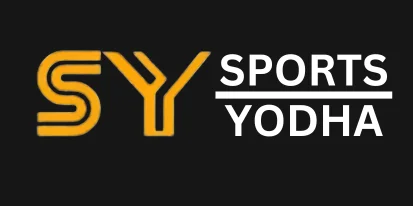As parents, we all want our children to have a safe and enjoyable time on the playground. One of the most important factors in ensuring this is choosing the right playground surface. With so many options available, it can be difficult to choose which option is best. That’s why we’ve put together this guide on the pros and cons of different playground surfaces. In this article, we’ll explore three popular choices: rubber mulch, sand, and grass. Each surface comes with its own set of advantages and disadvantages that should be considered before making a decision.
Also, Are you looking for outdoor gym equipment manufacturers in India?
By understanding the pros and cons of each option, you can make an informed choice that will provide your children with a fun and safe environment to play in. So let’s get started!
Rubber Mulch: Advantages and Disadvantages
You’ll love the soft feel of rubber mulch, but keep in mind that it can get hot and may not provide as much traction as other options.
Rubber mulch is made from recycled rubber tires and is a popular choice for playground surfaces because it is shock-absorbent, helping to prevent injuries from falls, and doesn’t disintegrate like wood chips or sand. Another benefit of rubber mulch is that it doesn’t attract insects or rodents.
However, a potential disadvantage of using rubber mulch is that it can get very hot in direct sunlight, which can burn children’s feet. Additionally, some people have complained of a strong odor when first applying the mulch, although this usually disappears over time.
Another issue to consider with rubber mulch is that it may not provide as much traction as other surfaces like turf or pour-in-place surfacing. Overall, there are both advantages and disadvantages to using rubber mulch on playgrounds.
While it provides excellent shock absorption and does not disintegrate like other materials, its potential disadvantages include heat retention and reduced traction. It is important to consider all factors before deciding which surface material will best suit your playground needs.
Sand: Pros and Cons
If you are considering using sand for your playground, have you ever thought about the potential benefits and drawbacks?
One of the main benefits of sand is that it provides a natural cushioning effect when children fall or jump. This makes it a safe surface option for children to play on. Additionally, sand can be easily replenished over time, unlike other surfaces such as rubber mulch that can become compacted.
However, there are also some disadvantages to using sand as a playground surface. For one thing, sand requires regular maintenance to keep it level and clean. It tends to get dirty and attracts bugs or animals if it is not properly cared for. Also, sand can be difficult to walk on and may not be suitable for playgrounds with disabled children who require wheelchairs or walkers.
Despite these drawbacks, many people still choose to use sand as their preferred playground surface because it is affordable and looks natural.
It is important to weigh the advantages and disadvantages of each type of surface before deciding which surface will be best for your specific needs. Ultimately, safety should always be a top priority when choosing any type of playground surface material for children so they can enjoy it without fear of injury or harm.
Grass: Benefits and Drawbacks
Grass may seem like an attractive and natural choice for playgrounds, but it has its own advantages and disadvantages.
One of the main advantages of grass is that it provides a soft surface for children to play on. It also has a natural look, which can be visually appealing in an outdoor environment. Additionally, grass provides opportunities for creative play such as rolling down hills or playing games such as tag.
However, there are also some disadvantages to using grass as a playground surface. One major problem is that grass requires constant maintenance to keep it safe for children to play on. This includes regular mowing and watering to prevent overgrowth and the soil underneath from hardening. Grass can also be slippery when wet, increasing the risk of slips and falls during rainy weather.
Another concern associated with using grass as a playground surface is the potential for allergens or other irritating elements in the environment that can cause health problems in children with respiratory problems or allergies. In addition, grass may harbor ticks or other pests that could pose a risk to children’s health if not properly managed.
Overall, while grass offers some benefits as a playground surface, it does require significant maintenance and can pose a safety risk if not maintained regularly. Playground planners should weigh these factors against their desire for a natural-looking play area before deciding whether or not to use this material in their design.
Conclusion
In conclusion, when it comes to choosing the best playground surface, there are many options to consider.
Rubber mulch is a popular choice due to its durability, low maintenance, and child safety features. However, it can be more expensive than other options and may not be as environmentally friendly.
Sand has been used in playgrounds for decades due to its affordability and accessibility. Although it requires frequent maintenance, sand provides excellent shock absorption, making it safe for children.
Grass is another option that offers natural beauty and environmental friendliness. However, grass requires constant maintenance and can be slippery when wet.
At the end of the day, choosing the right playground surface depends on many factors such as budget, safety concerns, weather conditions, and personal preferences. It is important to carefully weigh all the pros and cons before making a final decision.
Whatever your choice, make sure you prioritize your child’s safety while also providing them with an enjoyable playing experience.
